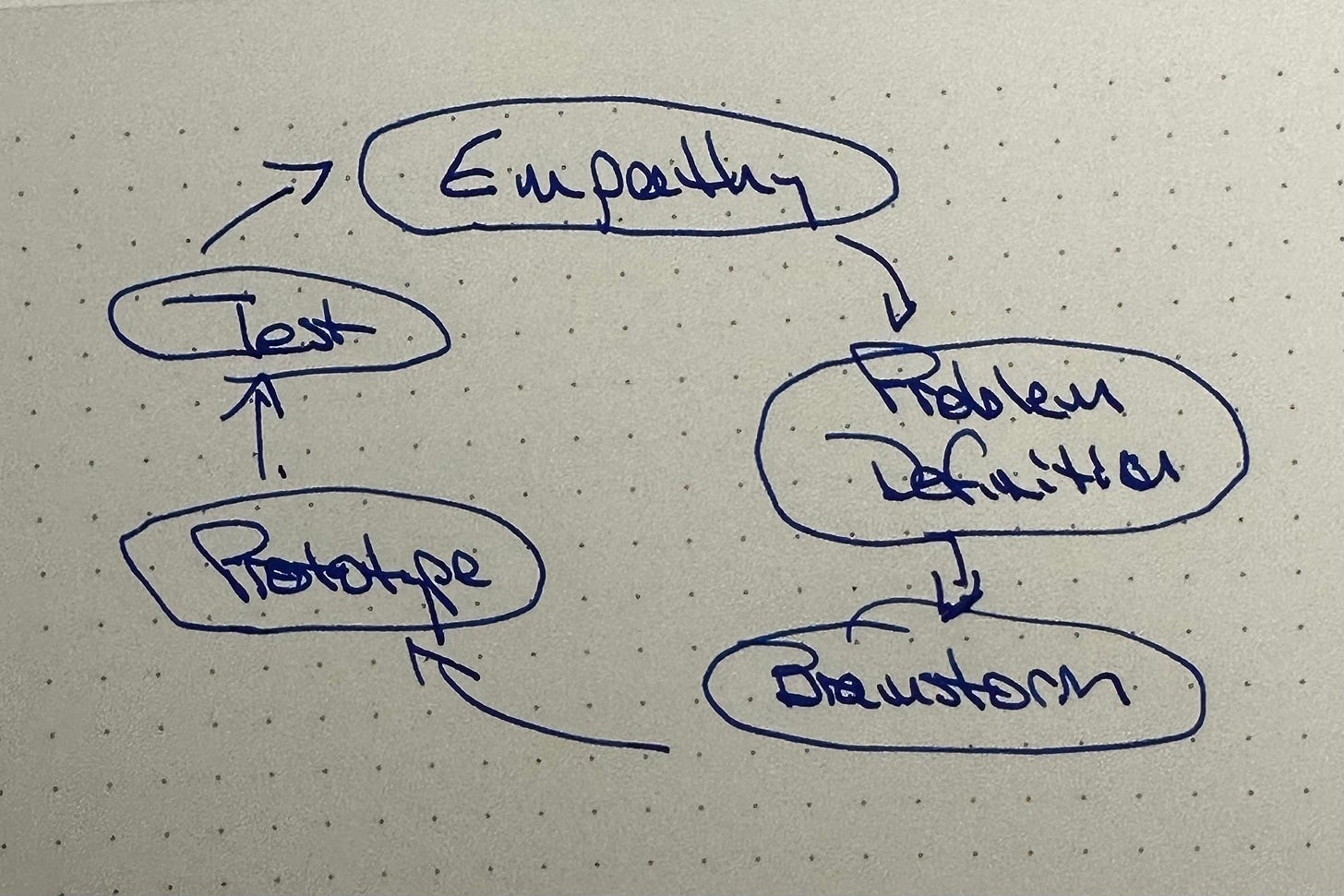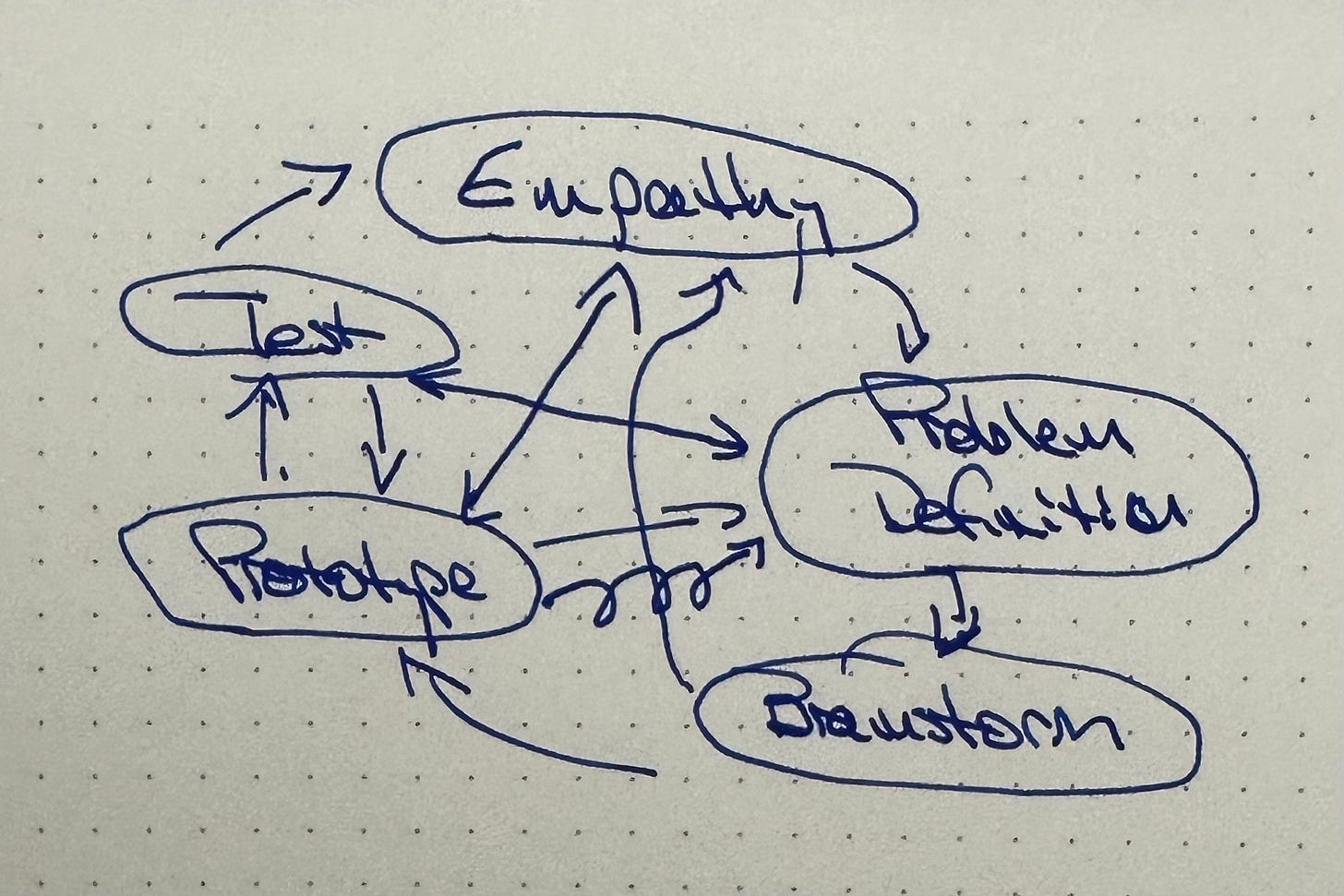Hitch Part 2 - Lessons to Learn
The people we view as successful got there not because they know everything about their chosen field, but rather because they’ve developed a process that enables them to experiment, learn, and PIVOT quickly. Over time, they’ve developed their process and the competence and competence in deploying it on big, hairy problems that don’t have instruction books. You know, like problems in life.
Sky’s approach takes the best of design thinking and human-centered design to create a process that is uniquely his. Here’s what we can learn from his process:
The word “empathy” implies empathy for others. Many design thinking tools help understand the thoughts and feelings of others. But Sky’s original spark of inspiration stemmed from a contradiction with his own values - he understood WHY reusable cups and bottles are important and still wasn’t carrying one. This led to the observation that there wasn’t a solution to meet his needs. His empathy work started internally. This added a personal passion to the process.
Traditional design thinking is often taught as a structured, step-by-step process. But sometimes Sky didn't strictly adhere to sequential stages of development. For example, when users handled the 3D-printed prototypes, Sky saw he needed to change the lid and the cup bottom. In effect, this was a mini-journey in his longer design journey. Sky’s approach was far more organic than a diagram of design thinking might suggest.
Discipline saves resources. Sky was making a good living from consulting when he started Hitch. When I noted how disciplined his process seemed from the outside, he said “Well, I was not going to put a lot more time and energy into this thing if it didn’t check all the boxes I needed to check. I’ve got two small kids - time and energy are precious resources.” So even at the beginning, he saw his process as a way to be efficient and to reduce the risk of starting something new.
There wasn’t a “Eureka!” moment. The final design didn’t appear as a flash in the shower. The entire design process was driven by repeated customer interactions, including counting coffee cups and repeatedly watching customers handle prototypes until Sky was sure they had a design that worked.
In Sky’s case, his success designing a new product wasn’t about knowing everything; it's about having a process that allows you to experiment, learn, and pivot swiftly. Sky's journey serves as a valuable reminder that having a process, even if it is messy, and non-linear, can lead to an amazing product.





